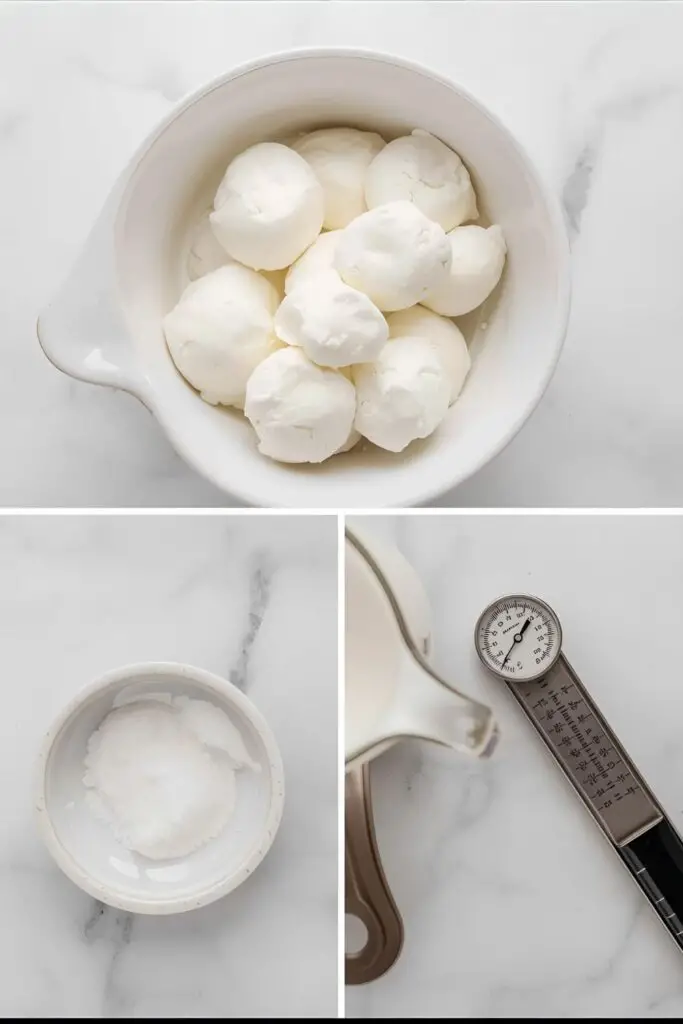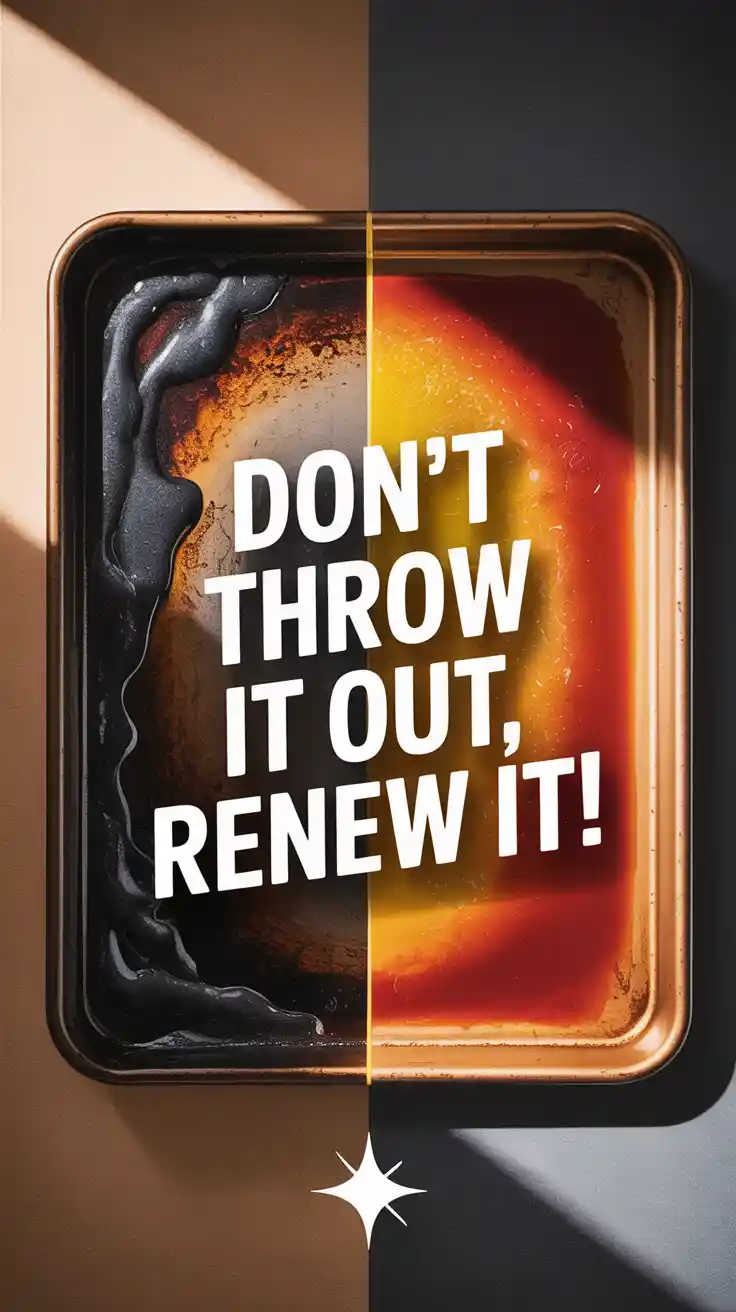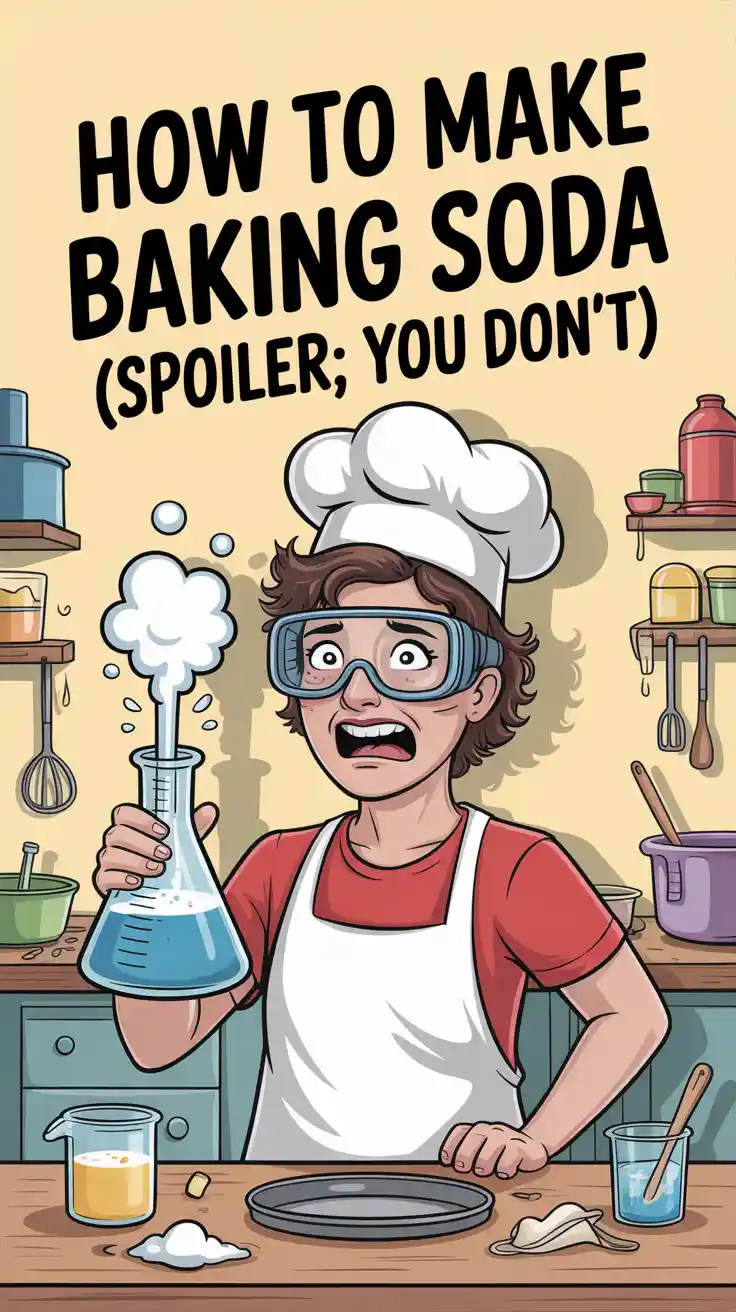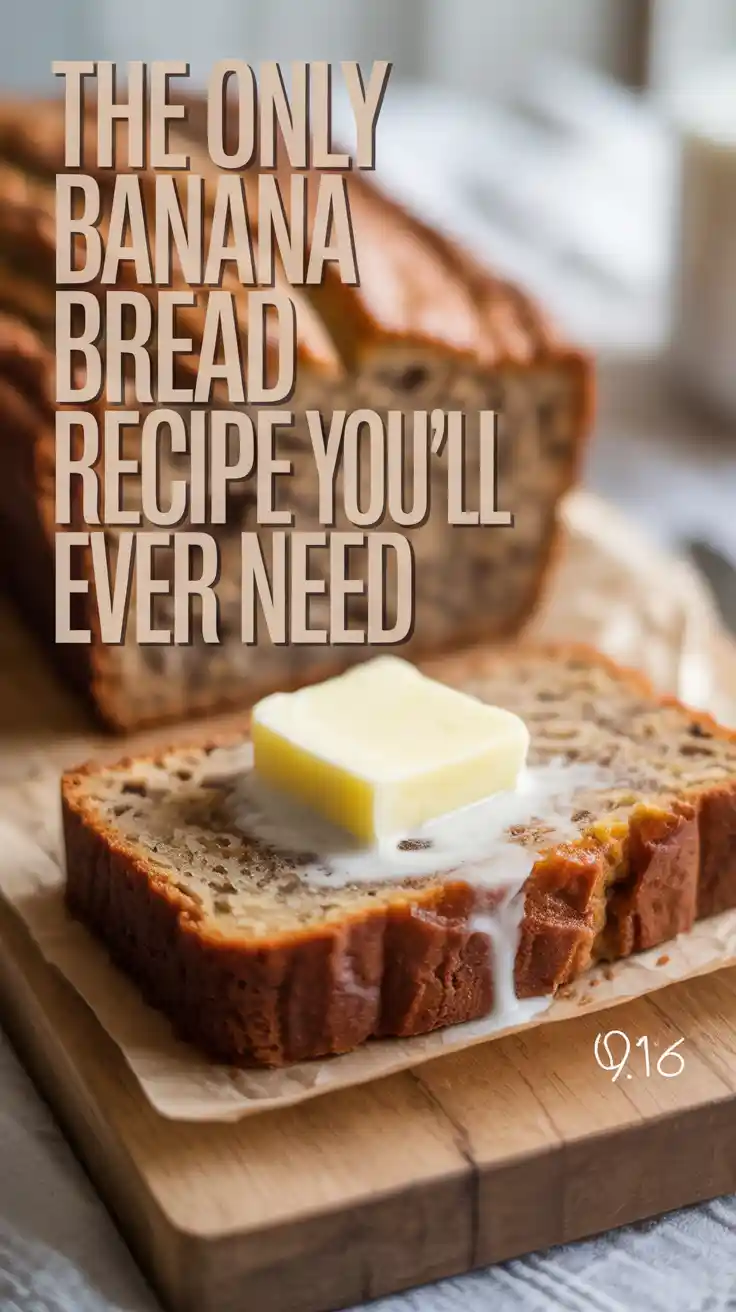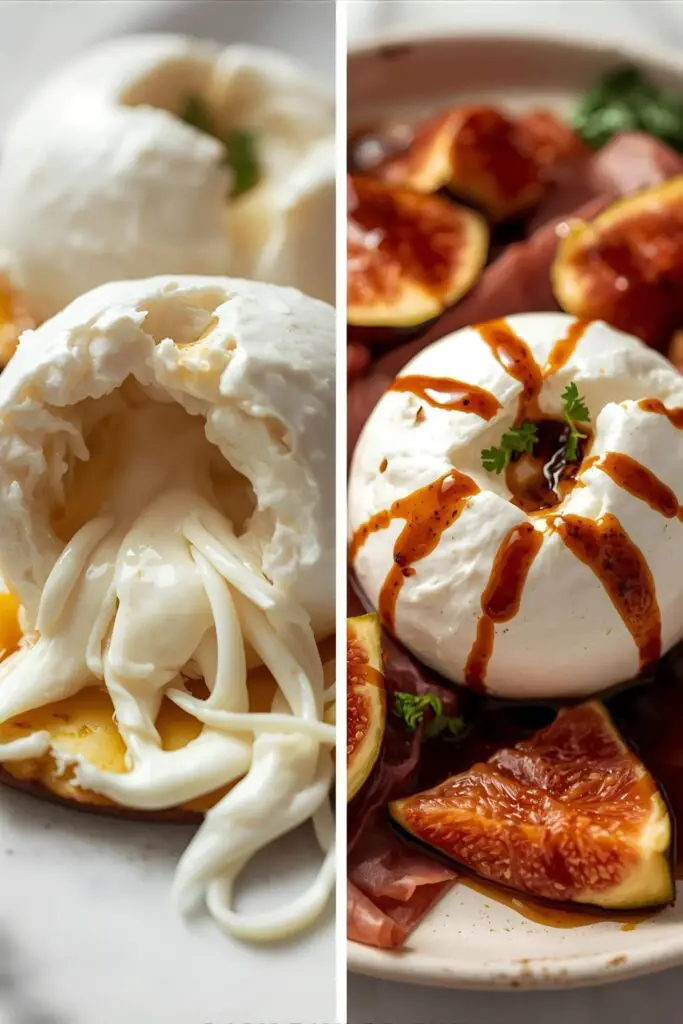How to Make Burrata at Home: Your Guide to Becoming a Cheese Deity
Alright, let’s have a chat. You’ve seen it on fancy menus, nestled next to heirloom tomatoes and drizzled with balsamic glaze that costs more than your shoes. You’ve marveled at videos of it being sliced open, its creamy heart spilling out like a delicious secret. I’m talking about burrata, the undisputed queen of fresh cheeses. And you’re probably thinking, “There’s no way I can make that.” Well, buckle up, because today I’m going to show you exactly how to make burrata, and honestly, it’s so much easier than you think. You’re about to upgrade your cheese game from “can open a bag of shredded cheddar” to “artisanal cheesemonger in the making.” Seriously.
Why This Recipe Is Basically Life-Changing
So, why bother making your own burrata? Aren’t there, like, stores for that? Yes, but hear me out.
First, the bragging rights. Imagine your friends’ faces when you casually mention, “Oh this? Yeah, I just whipped up some fresh burrata this morning.” The sheer, unadulterated awe you will receive is worth the (minimal) effort alone. You will become a legend.
Second, the flavor. There is absolutely nothing like burrata that is mere minutes old. The warmth, the freshness, the delicate milky sweetness—it’s a completely different stratosphere from the stuff that’s been sitting in a plastic tub for a week.
And finally, it’s shockingly simple. The secret isn’t some ancient Italian magic; it’s just a few key ingredients and a technique that looks way more complicated than it is. It’s like a culinary magic trick, and you’re about to learn the secret.
The Sacred Ingredient List
This isn’t a 30-ingredient monstrosity. We’re keeping it pure and simple, just like good cheese should be.
- 1 lb (450g) Fresh Mozzarella Curd: This is the non-negotiable hero of our story. You can find this at Italian delis, cheese shops, or online. Do NOT try to use a block of low-moisture mozzarella from the grocery store. It will not work, and you will be sad.
- 1/2 cup Heavy Cream: This is for the glorious, creamy filling. Use good quality, high-fat cream.
- 2 tsp Kosher Salt: Divided for the filling and the stretching water.
- Hot Water: Not boiling! We’ll get to the specifics, but this is what brings our cheese to life.
- Ice Water Bath: A big bowl of ice and water to give our finished burrata a firm hug.
Tools of the Cheese-Making Trade
You don’t need a professional kitchen, just a few key items. Think of these as your wands for weaving cheese magic.
- Large Pot or Dutch Oven: To heat your water.
- Large Glass or Stainless Steel Bowl: For melting and stretching the curd.
- Slotted Spoon: Your best friend for fishing curd out of hot water.
- Instant-Read Kitchen Thermometer: I cannot stress this enough. Getting the water temperature right is critical. Don’t guess!
- Food-Safe Gloves: Thick rubber or nitrile gloves. You’re dealing with very hot water, and unless you have hands of asbestos, you need these.
- A couple of smaller bowls: For the ice bath and for mixing the filling.
- Knife and Cutting Board: For chopping up some of the curd for the filling.
Let’s Make Some Magic: Step-by-Step Instructions
Ready to become a cheese wizard? Put on some triumphant music and let’s do this.
Step 1: Prepare the Filling (The Stracciatella)
First, we make the gooey center. Take about a third of your mozzarella curd (a little over 5 ounces or 150g) and chop it into tiny, pea-sized pieces. You can also just shred it with your fingers. Throw it in a small bowl.
Pour the heavy cream over the shredded curd and add 1/2 teaspoon of kosher salt. Give it a gentle stir. This glorious mixture is called stracciatella, which means “little rags.” Set it aside and try not to eat it all with a spoon.
Step 2: Heat the Water
Fill your large pot with water and start heating it. We are aiming for a very specific temperature: between 185°F and 195°F (that’s 85°C to 90°C). Use your kitchen thermometer to monitor it. If it gets too hot, the curd will fall apart. Too cold, and it won’t stretch. This is the most important step, so don’t wing it!
Once it’s at temperature, dissolve the remaining 1.5 teaspoons of salt in the water. Keep the heat on low to maintain the temperature.
Step 3: Melt and Stretch the Curd
Place the remaining two-thirds of your mozzarella curd into the large glass bowl. Now, carefully ladle some of that hot, salty water over the curd, just enough to cover it. Let it sit for about 30-60 seconds. You’ll see it start to soften and look melty. This is where the fun begins.
Put on your food-safe gloves. Using your slotted spoon (or your gloved hands), begin to fold and press the curd against the side of the bowl. It will start to come together into a single, cohesive mass. It will feel like the world’s most delicious Play-Doh.
Lift the mass out of the water (let the excess drain off) and start stretching it. Fold it over on itself a few times. It should be smooth, shiny, and pliable, like a beautiful, edible balloon. If it resists, dip it back in the hot water for a few seconds to warm it up. Don’t overwork it, or it’ll get tough! Just a few good stretches will do.
Step 4: Form and Fill the Pouch
Now for the grand finale. Shape the stretched mozzarella into a flat disc in your hands, about 1/4-inch thick. You’re basically making a little cheese purse. How cute is that?
Carefully spoon that heavenly stracciatella filling you made earlier right into the center of your mozzarella disc. Don’t overfill it, or you won’t be able to seal it.
Step 5: Seal the Deal and Take a Dip
Gently bring the edges of the mozzarella disc up and around the filling, pinching them together at the top to seal it tightly. You can twist the top to create a little knot, which is the classic burrata look.
Immediately plunge your freshly formed ball of joy into the ice water bath. Let it sit there for a couple of minutes to firm up and stop the melting process.
And… that’s it. You did it. You literally made burrata. Take a bow.
Calories & Nutritional Info
Let’s be real, you’re not eating burrata for its health benefits. But for those who are curious, here’s a rough estimate per serving (assuming this recipe makes 2 large or 4 small balls, and one large ball is a serving):
- Calories: Approximately 450-500 kcal
- Fat: Around 40g (It’s mostly cream and cheese, what did you expect?)
- Protein: About 18g
- Carbohydrates: Roughly 2g
- Note: This is an indulgence! It’s rich, creamy, and packed with calcium, but it’s definitely a treat-yourself kind of food.
Common Mistakes to Avoid (Or, How Not to Weep Over Ruined Cheese)
We all make mistakes. Here are a few to sidestep on your path to burrata greatness.
- Ignoring the Thermometer: I’ve said it before, and I’ll say it again. If your water is the wrong temperature, this recipe will fail. Don’t be a hero. Use a thermometer.
- Using Pre-Shredded or Low-Moisture Mozzarella: This is a one-way ticket to a sad, rubbery disaster. You must use fresh mozzarella curd. It has the right acidity and moisture content to stretch properly.
- Overworking the Mozzarella: Are you kneading sourdough? No. You are gently stretching cheese. A few folds and stretches are all you need to make it smooth. Overdo it, and it will become tough and chewy.
- Forgetting Your Gloves: I know they can be clumsy, but that water is HOT. Third-degree burns are not a good look on anyone. Wear the gloves.
Variations & Customizations
Once you’ve mastered the basic technique, why not get a little wild?
- Truffle & Herb Explosion: Add a tiny drizzle of black truffle oil and some finely chopped fresh chives or basil to the stracciatella filling. Instant gourmet upgrade.
- Spicy Diablo Burrata: Infuse your heavy cream with a pinch of red pepper flakes for about 20 minutes before mixing it with the curd. Strain out the flakes, and you’ve got a filling with a kick.
- Lemon & Thyme Sunshine: Add the zest of half a lemon and some fresh thyme leaves to the filling for a bright, zesty twist that’s perfect for summer salads.
Frequently Asked Questions (Because I Know You Have Them)
1. What exactly IS burrata filled with? It’s filled with a mixture of fresh mozzarella shreds (the “curd”) and heavy cream. This creamy, stringy mixture is called stracciatella.
2. Is it really that hard to make? TBH, no! The process is surprisingly fast. The only tricky part is getting the water temperature right. Once you nail that, it’s smooth sailing.
3. Can I use a regular ball of fresh mozzarella from the store? Nope, sorry. A finished ball of mozzarella has already been stretched and set. You need the raw, unstretched curd to be able to melt and form the pouch.
4. What’s the difference between burrata and mozzarella? Think of it this way: mozzarella is a solid block of delicious cheese. Burrata is a pouch made of mozzarella, with a surprise creamy, stringy mozzarella filling inside. It’s mozzarella’s cooler, more dramatic cousin.
5. How long does homemade burrata last? Homemade burrata is like a beautiful sunset—it’s best enjoyed immediately and doesn’t stick around for long. You should eat it the same day you make it, or within 24 hours at most. It will lose its signature texture and creaminess the longer it sits.
6. What’s the best way to serve burrata? The beauty of burrata is its simplicity. Serve it at room temperature with ripe tomatoes, fresh basil, a drizzle of extra virgin olive oil, and a sprinkle of flaky salt. Or plop it on a pizza, a salad, or a bowl of pasta. There are no wrong answers.
7. Why isn’t my mozzarella curd melting and stretching? Nine times out of ten, your water is too cold. Check the temperature again! It needs to be in that sweet spot of 185-195°F (85-90°C). If it’s still not working, your curd might be old or have the wrong pH, but the water temp is the most likely culprit.
Final Thoughts
You did it. You looked at a cheese that costs a small fortune at restaurants and said, “I can do that.” And you were right. You are now officially a cheesemaker. Go ahead, update your social media bios. You’ve earned it.
Now, go enjoy that magnificent, creamy orb of perfection you created. Serve it to friends, eat it alone in your kitchen with a spoon, or just poke it and watch the creamy goodness flow. You’ll never look at that little plastic tub in the grocery store the same way again. Welcome to the club. 🙂
